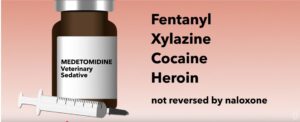
In Part 1, we looked at a Gallup poll from 2024 that indicated American’s views on the effects of marijuana have worsened since 2022; only 43% think it has had a positive effect, a decrease of 10%. The decrease was present across demographic categories of age, political party, whether or not marijuana was ever tried, and religious service attendance. Since recreational cannabis is now legal in 24 states and Canada, we can look at what the consequences have been there before going ‘full Colorado’ here in PA—and it’s not looking very promising.
In The Atlantic, it was noted that Colorado and Washington state legalized recreational cannabis in 2012. Advocates predicted increased tax revenue, safe and accurate labeling of products, and an industry that prioritized people over profits. “But all of those promises have turned out to be overstated or simply wrong.” Cannabis consumption has increased dramatically. In 2000, 2.5 million Americans reported daily or near-daily cannabis use. By 2022, that had grown to 17.7 million—a seven-fold increase.
Today, more than 40 percent of Americans who use cannabis take it daily or near-daily, and these users consume perhaps 80 percent of all the cannabis sold in the U.S.
The drug’s potency has also risen sharply. Until the year 2000, the average potency of seized cannabis never exceeded 5 percent THC, the principal intoxicant in the plant. Today, smokeable buds, or flower, sold in licensed stores usually exceed 20 percent THC. Vapes, dabs, and shatter—all of which are forms of drug delivery that commercialization spread—are more potent still.
“Many assumptions made about what would follow legalization seem naive in retrospect.” It was predicted cannabis legalization would reduce alcohol consumption. But reduction in some groups was offset by increases in others. Advocates predicted legal cannabis would lead to people using fewer opioids. But it seems legalization is associated with a higher opioid mortality.
Legalization was supposed to help correct the discriminatory enforcement of marijuana laws that was said to be related to black and Latino Americans making up two-thirds of the U.S. prison population. But only about 2% of inmates were in prison exclusively for marijuana offenses, “and most of those were traffickers or their employees.” States that just decriminalized marijuana possession saw declines almost as large as states that legalized the supply. “In California, for example, converting marijuana possession from a misdemeanor to a civil infraction reduced possession arrests by 86 percent in just 12 months. Subsequent legalization had only a modest incremental effect.”
Large producers have dominated the artisanal production many advocates dreamed about with cannabis legalization. One producer operates almost 2,000,000 square feet of greenhouse grow space. Commercial production has driven down prices, and reduces the expected income windfall from marijuana. Commercial cannabis providers are also difficult to regulate. Misleading labels are commonplace; and some producers use unapproved pesticides.
In California, cannabis excise and sales taxes peaked in 2021; by the first quarter of 2023, they were reported as accounting for only 0.2 percent of total state tax collections. Not all taxes due even get collected; in 2023, for instance, 15 percent of the state’s cannabis firms defaulted on taxes they owed.
The 2018 Farm Bill created further opportunities for bad behavior. The bill was supposed to legalize nonintoxicating uses of the cannabis plant, such as growing fiber for clothes or seed for food and oil. Unfortunately, loopholes let unscrupulous actors sell intoxicating products completely outside of most states’ regulatory systems. The Farm Bill permits the production and sale of “hemp”—defined as any cannabis product containing less than 0.3 percent of delta-9 THC, the primary THC variant in cannabis. But edibles, being relatively heavy, can contain a lot of delta-9 THC and still, by weight, remain under the 0.3 percent threshold. What’s more, the marijuana plant contains nonintoxicating cannabinoids that can be chemically transformed into intoxicating cousins such as delta-8 THC. The resulting array of products, which can appeal to youth, may have no labeling requirements (depending on what state they’re being sold in) and no protection against unfamiliar and potentially dangerous synthetic by-products. They may not have been tested for pesticides either.
See “The Loophole with Delta-8.”
The Canadian Experience Post Legalization
Years ago, the advocates of cannabis reform argued that if we legalized, even normalized, the drug, everything would be fine. The drug was harmless, the black market would disappear, we’d have a gusher of tax revenue, law enforcement resources would be freed up, the kids would be OK, there’d be no cost to the health-care system, and it even had medicinal benefits. How wrong they’ve been.
In “Canada’s cannabis use has become a serious problem,” Mark Johnson reported that more than 350 children under the age of nine were rushed to ERs across Canada for unintentional cannabis poisoning between January 2020 and September 2021. In January 2020, the sale of edible products (e.g., gummies, chocolates, and baked goods) with THC was approved in Canada.
In “Edible Cannabis Legalization and Unintentional Poisonings in Children,” published in The New England Journal of Medicine, researchers said their data indicated legalization in Canada was associated with marked increases in hospitalizations for cannabis poisoning in children. Most of the increase occurred after the legalization of cannabis edibles. This was despite strict regulations targeted at reducing poisoning in children, including a maximum of 10 mg of THC per edible package—10 times less than what is permissible in some U.S. regions. There were also requirements for plain and child-resistant packaging, and consumer education campaigns.
Canada was the second nation after Uruguay to legalize marijuana in October of 2018. It now has the second highest rate of marijuana use in the world, just behind Papua New Guinea. Drugged driving is now a significant factor in serious car accidents, according to the “National Drug Driving Study 2024”: “driving after cannabis use appears to be an emerging problem in Canada and may now be more common than driving after drinking alcohol.”
Cannabis use disorder in 18-to-24-year-olds has increased since legalization, according to Vignault et al in the Canadian Journal of Psychiatry. There were 37.9% of 18-to-24-year-olds reporting active cannabis before legalization and 52.3% afterwards. Those 18-to-24-year-olds with cannabis use disorder were at 17.3% before legalization and 25.9% afterwards. Both comparisons were statistically significant.
The New York Times reported on two new Canadian reports that looked at death rates and psychosis associated with cannabis use disorder. Patients seeking help at a hospital with cannabis use disorder died at almost three times the rate of individuals without the disorder over the next five years. The lead author of the studies thought these were most likely underestimates. He acknowledged the study could not conclusively say whether cannabis itself increased the death risk, or whether other health and lifestyle factors played a role. “Either way, this group is really, really high risk, and could benefit from intervention and monitoring and prevention.”
The study on death rates, published in JAMA Network Open, looked at all individuals between the ages of 15 and 105 living in Ontario, Canada, between 2006 and 2021—11,622,571 individuals. It found that individuals with incident hospital-based CUD (cannabis use disorder) were at markedly increased risk of death compared to the general population. “Individuals with hospital-based CUD care were at increased risk of all investigated types of death but at particularly elevated risk of death by suicide, trauma, opioid, alcohol, and other drug poisoning and lung cancer relative to the general population.”
A second study in JAMA Network Open by the same researchers for ICES (Institute for Clinical Evaluative Services) at the Ottawa Hospital found that the association of cannabis use disorder and schizophrenia increased from 3.7% in the prelegalization period to 10.3% postlegalization. MedicalXpress quoted the lead author of the article as saying: “The tripling of schizophrenia cases associated with a cannabis use disorder over the past 17 years and rising cases of psychosis underscores the urgent need for targeted prevention strategies, particularly for younger populations who appear to be at the greatest risk.”
Tim Hortons is a Canadian multinational coffeehouse and restaurant chain with headquarters in Toronto with 3,515 locations in Canada, as of December 17, 2024. By comparison there are over 3,600 legal cannabis stores across Canada, not counting the illegal ones. Johnson said: “If Tims was once our national retailer, that title now goes to the pot shop.”
As anyone knows, you often can’t walk down the street in Canada without breathing in rancid pot smoke. You can’t take your children to a pro sports game without walking through a cloud outside the gates. Some streets and parks reek of pot, with addicts magnifying the climate of decay and disorder in our cities.
Things have gotten out of hand. To reclaim our streets and parks, smoking pot in public should be a fineable offence.
So, there’s at least one person in Canada who isn’t thrilled with the consequences of Canada’s decision to legalize recreational marijuana. I’d bet there are many more who agree with Mark Johnson’s assessment. There are problems with drugged driving, growing risks of cannabis use disorder, availability of cannabis to minors, and so on. In the U.S., more people believe marijuana had a negative effect on society and individuals than two years ago. The majority of Americans now think negatively about marijuana. Legalization seems to benefit, not limit, the illicit marijuana business; and children need to be watched more closely in households that have edible cannabis products.
Oh, and cannabis use disorder has increased, as has CHS (cannabinoid hyperemesis syndrome), and the evidence is growing that there at least a strong association between cannabis use and psychosis. We don’t have to speculate on what the future holds for the legalization of recreational marijuana in Pennsylvania, we just have to look where it has already been legalized and see the consequences. And there’s one last caveat. The Prime Sponsor for Senate Bill 846 to legalize recreational marijuana in PA, mentioned in Part 1, is also the Chair of the Law & Justice Committee, where Senate Bill 846 awaits committee action.





